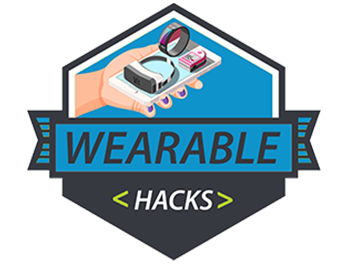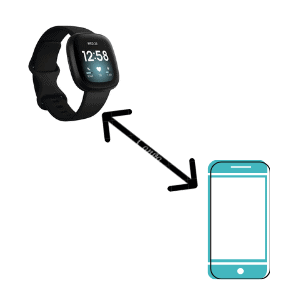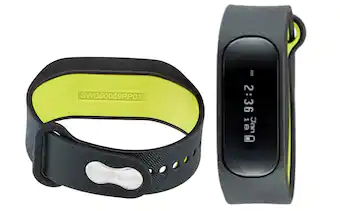Can you wear a fitness tracker on your ankle?
You will find many fitness freaks out there who love to use fitness trackers. But some people cannot or don’t want to wear them on their wrists. If you are one of these few, you might be asking yourself if you can wear your fitness tracker on your ankle, and the answer is yes, technically.
At present, people who are not too well known about how ankle fitness trackers work probably aren’t conscious of the fact that they’re quite functional while in contact with the wearer’s skin. It doesn’t matter where you’re wearing them. However, there are a couple of benefits to wearing a tracker on your ankle.
Let’s dig deeper into the details.
OK, the main question is can you wear it on your ankle?
Here’s the short and sweet answer.
Yes, you can wear your fitness tracker on your ankle, but it doesn’t provide you with health-related information like heart rate, burning calories etc. You can only check the running-related information so keep this in your mind before purchasing a fitness tracker.
What should you look for in selecting the best ankle fitness tracker?
Today, there is a huge selection of ankle fitness trackers that can help you monitor your health, and track activity or sleep. However, making the right choice when buying ankle fitness trackers is not easy. Keep in mind the below-mentioned steps before buying an ankle fitness tracker:
Functionality
The most crucial point is the capabilities of your fitness tracker. All the devices of this segment have three main functions: counting the number of steps, kilometres travelled, and calories that were burned per unit of time.
Water resistance
One of the essential selection criteria is the presence of moisture protection in the device. It may seem to many that this is relevant for swimmers or water sports enthusiasts but do not forget that there is always a risk of getting caught in the rain, and no one takes an umbrella for jogging in the park.
Battery life
Using an ankle fitness tracker can become annoying if you need to charge it too often. Models with a lot of sensors, such as a heart rate monitor, as well as high-resolution screens, will require more regular charging.
Ankle Fitness tracker design
Before choosing an ankle fitness bracelet, you need to know how it will be more comfortable to wear it. Most smart bracelets are designed to be worn on the wrist, but some attach to clothing with a special clip.
Benefits of ankle fitness tracker
- Smart bracelets can be used in a wide variety of sports: walking, running, swimming, cycling, and even skiing. Some types of trackers automatically detect the type of activity and switch to the appropriate mode, after which they give out all the information about the workout.
- The accelerometer allows you to track your physical activity throughout the day. This is especially important for people leading a sedentary lifestyle and seeking to get the necessary physical activity. And the calorie counter will be an excellent assistant for those who seek to lose weight.
- The accessory perfectly synchronizes with the smartphone, so all the data received can be saved. You can also receive notifications in real-time for calls and SMS.
- The bracelet does not create discomfort when playing sports while sleeping and doing any homework: it is comfortable and weighs little. The modern design allows you to wear the device with any clothes: from a business suit to an evening dress.
- The fitness tracker works in hot and cold weather.
- The device is effortless to operate, so even someone who is completely far from technology can figure it out.
- The device is suitable for people of any age and gender. This, combined with its broad functionality, makes it a great gift.
- It is effortless to choose the right product: there are a large number of devices on the sports goods market with an optimal set of options, excellent design, and low cost.
They have several different benefits, and some of them are extremely useful. The article presents the main functions of fitness trackers, as well as technologies:
- Counting steps. Most fitness trackers support the accelerometer function, that is, a device that can measure how quickly speed and direction change. With this tool, the tracker counts the number of steps you have taken and also measures all your movements from side to side and up and down.
- Measurement of displacement. A more complex device may contain various sensors for tracking movements. For example, you can use a gyroscope that can change direction and rotate around its axis to find out whether you are sitting, standing or lying down. A barometer that measures atmospheric pressure and can calculate how high you are and determine how many flights of stairs you have climbed. And a tiny GPS device will pinpoint your location, which is necessary to record your route on a run or bike ride.
- Checking vital signs. Many fitness trackers also have a heart rate monitor function that can take heart rate readings both during exercise and at rest. Some devices can measure body temperature and sweat production. They correlate this data with your heart rate measurements and determine how efficiently you are exercising.
- Calorie counting. Some fitness trackers use heart rate data to estimate the number of calories burned during the day. Some devices even have a function to record the number of calories consumed. Thus, you can track the number of calories burned in comparison with the amount consumed, which will help to cope with the problem of excess weight.
- Tracking the state of the body in a dream. Several fitness trackers can track your sleep state. While you are lying down, they are determined by the intensity of movements whether you are asleep or awake, and in what stage of sleep you are. But, this function does not always work well. Devices often enhance or decrease the number of hours you sleep.
- Synchronization with other devices. Fitness trackers often work with smartphone apps. These applications can track the owner’s activity over time to help him form healthy habits. Some trackers can connect to other smart devices, such as a Bathroom Smart Scale or a Heart Rate Monitor.
- Sending messages. Another way the fitness tracker can communicate with you is with a sound reminder of a new message. They can notify you of incoming calls, text messages, emails, and even social media posts. Moreover, some trainers may send you messages. For example, you can set up a “move reminder” that tells you to start moving if you’ve been sitting for long enough. They will also send you a reward message if you meet your fitness goal.
In many cases, you can use your device to share progress reports with friends online. In this way, you can organize a friendly competition that can motivate you to train harder. Some trackers may even transmit information about your condition to a doctor. Sharing your accomplishments is a proven way to achieve your goals.
However, not all trackers have these features. Basic 24/7 trackers track daily activity, steps, calories burned and periods of sleep and activity.
More sophisticated gadgets do all of the same and perform many other functions required by professional athletes. They measure heart rate, breathing, miles travelled, speed and even altitude – an excellent app for cyclists and skiers. Some even suggest listening to music to spice up your workouts.
Conclusion:
So, this was all about the ankle fitness tracker. Which ankle fitness tracker option you choose will depend on your choice and need. Fitness freaks can choose ankle fitness trackers to measure where they need to go.
Hope you’ve got your answer by now and if you still have any issues regarding this, feel free to comment below or right to us. We will be happy to help you.
Good luck!






